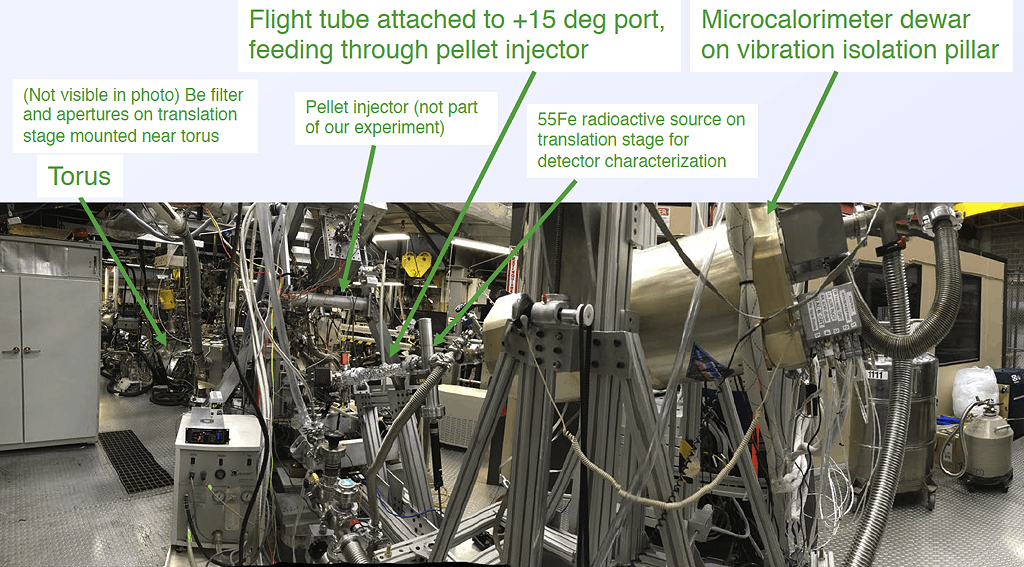The effort to develop fusion for energy generation has been described as “bringing a star to earth.” Recently, a type of instrument similar to those being used to study the emission from hot, extraterrestrial plasma, such as from stars, black holes, and supernova remnants, has been installed on the MST experiment at UW-Madison to study hot terrestrial plasma.
This instrument, called an x-ray microcalorimeter spectrometer was commissioned on MST by a team from Lawrence Livermore National Laboratory, Wisconsin Plasma Physics Laboratory, and NASA/Goddard Space Flight Center. The first run campaign with this instrument on MST, which took place during the last two weeks of August 2019, produced highly encouraging results, despite the challenge of observing a pulsed plasma in an electrically noisy environment. Expected lines from He-like aluminum ions (Al11+) were observed with acceptable resolution, and data was recorded for a variety of MST plasma conditions. The next steps are to further hone data analysis techniques, improve in-situ spectral calibration, and increase instrument flexibility to adapt to plasma conditions. The combination of high spectral resolution and broad spectral coverage provided by the spectrometer will provide plasma diagnostic capability important to the development of fusion.
 This work was performed, in part, under the auspices of the U.S. Department of Energy by Lawrence Livermore National Laboratory under Contract DE-AC52-07NA27344, based upon work supported by the U.S. Department of Energy, Office of Science, Office of Fusion Energy Sciences.
This work was performed, in part, under the auspices of the U.S. Department of Energy by Lawrence Livermore National Laboratory under Contract DE-AC52-07NA27344, based upon work supported by the U.S. Department of Energy, Office of Science, Office of Fusion Energy Sciences.